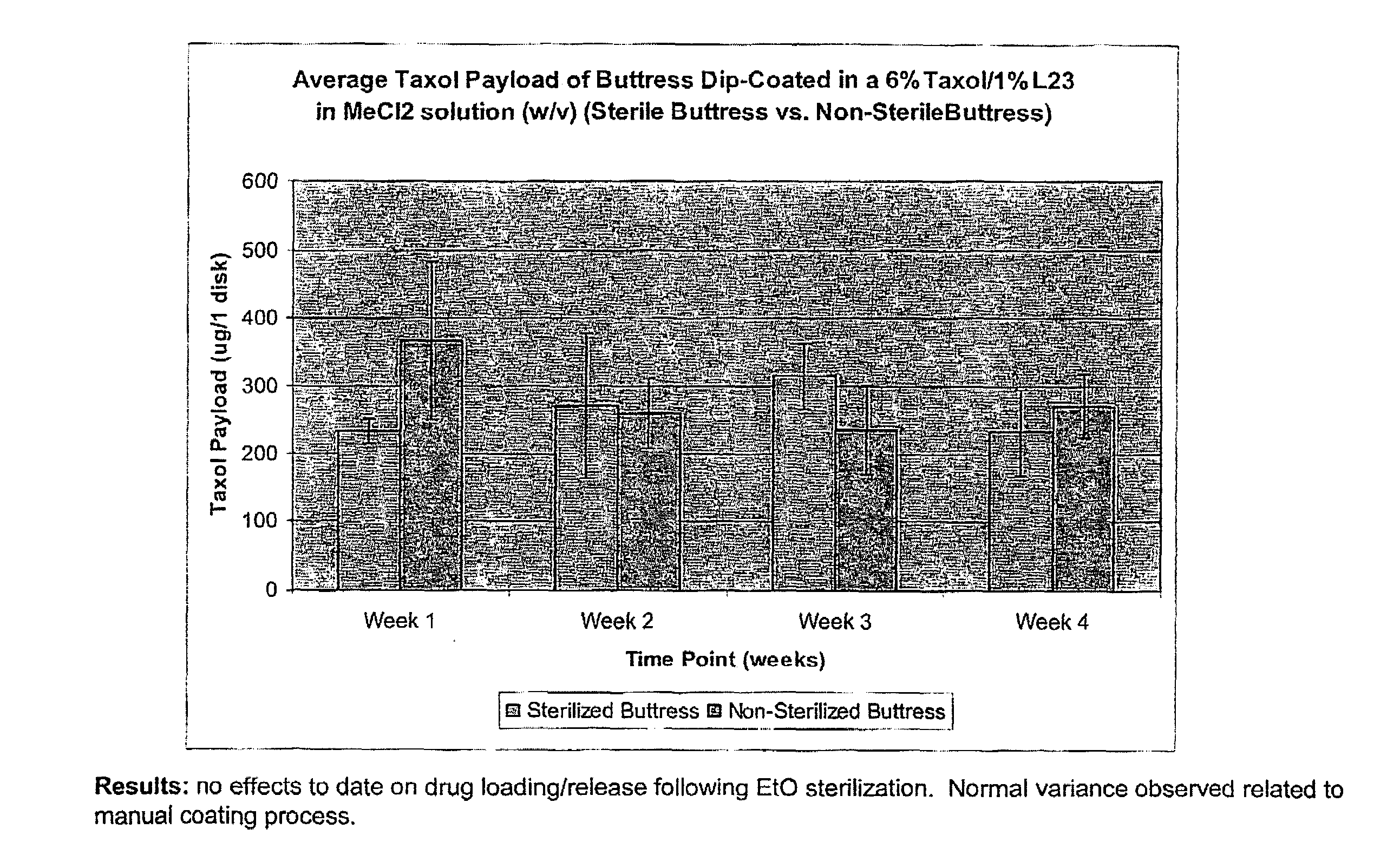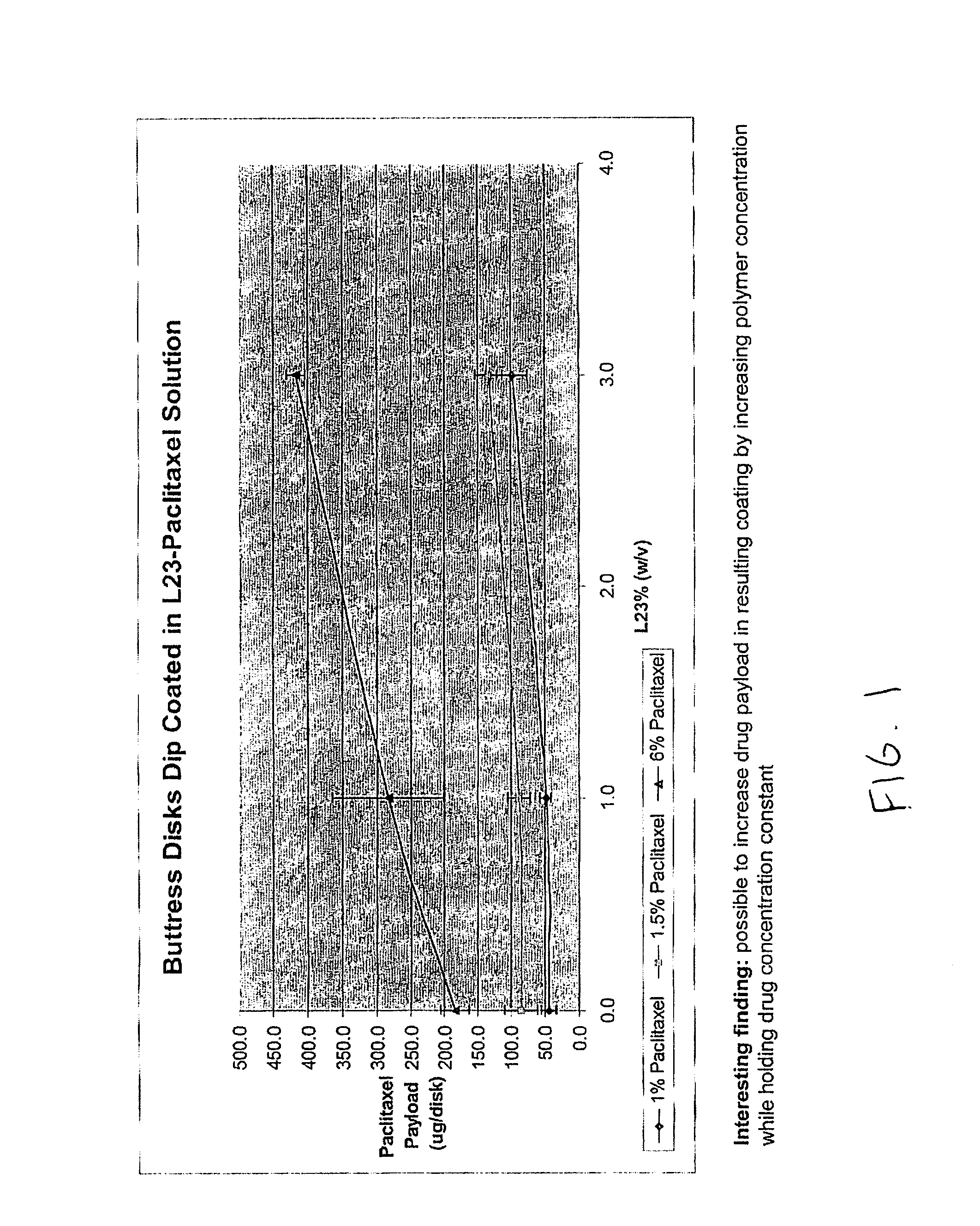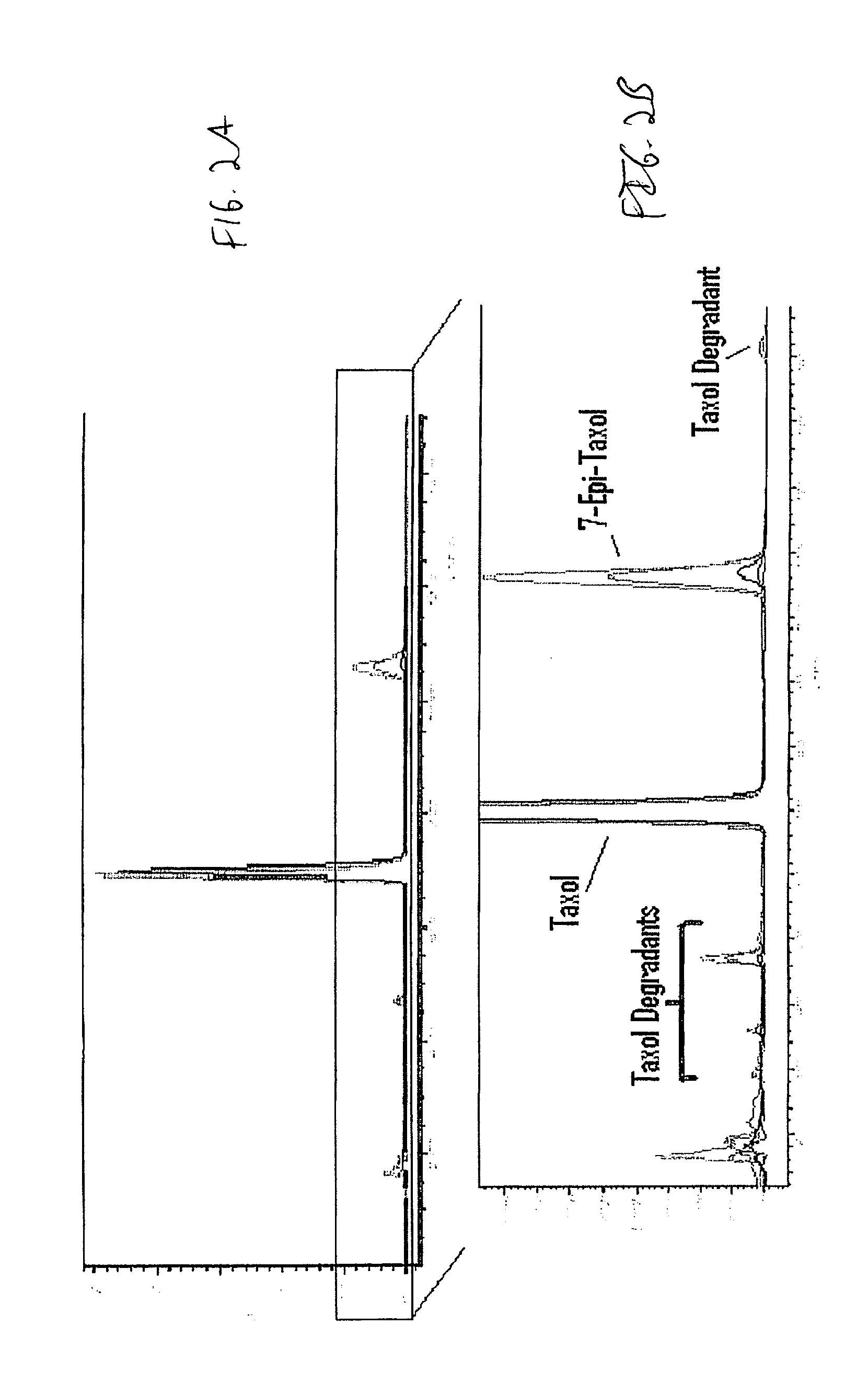Wound closure material
- Summary
- Abstract
- Description
- Claims
- Application Information
AI Technical Summary
Benefits of technology
Problems solved by technology
Method used
Image
Examples
example 1
[0083]A film was produced from a polymer which included about 60% by weight glycolide, about 14% by weight dioxanone, and about 26% by weight trimethylene carbonate. Polymer pellets were placed in a heated hydraulic press (Carver Laboratory Press, Model 2626). The press was heated to a temperature from about 125° C. to about 165° C. The pellets were placed in the center of Teflon coated steel plates with steel shims to control the thickness of the resulting film. The pellets were allowed to melt and spread across the plates and a pressure of less than about 100 psi was applied to the polymer melt. The entire apparatus was crash cooled by running water through the plates. Films were obtained having a thickness of from about 0.002 inches to about 0.012 inches. The films had a multi-directional orientation.
example 2
[0084]A random copolymer possessing about 17% by weight caprolactone, about 7% by weight lactide, about 7% by weight trimethylene carbonate, and about 69% by weight glycolide was utilized to produce a film. The copolymer was extruded from a ¾ inch general purpose extruder through a slit dye. A thick tape was produced. The resulting tape was placed on Teflon coated steel plates in a hydraulic heat press as described above in Example 1, with the appropriate shims to produce a film having a desired thickness. The heat press was heated to a temperature of about 105° C. to about 120° C. and a pressure of less than about 100 psi was applied. Similar to the films produced in Example 1 utilizing pellets, films produced by this method had a thickness of from about 0.002 inches to about 0.012 inches. As the extruded film had less crystalline structure than the pellets of Example 1, a lower temperature could be used to make the polymer flow. The films had a multi-directional orientation.
example 3
[0085]A film was produced with the polymer described above in Example 2 using a blown film process. Polymer pellets were introduced into an extruder (Randcastle Extrusion System, Inc., Cedar Grove, N.J.) possessing a screw / barrel configuration and a jacket fitted with external heating elements. The barrel had three zones held at three different temperatures, with zone 1 being closest to the portion of the barrel into which the polymer pellets were introduced, zone 2 being the mid-portion of the barrel, and zone 3 being the end of the barrel from which the polymer was extruded. The length / diameter ratio of the barrel was 24 to 1, with a ¾ inch screw inside the barrel. A die having a diameter of about 1.25 inches was located at the end of the barrel through which the polymer melt was extruded.
[0086]The barrel temperature for zone 1 was about 344° F.; for zone 2, from about 347° F. to about 350° F.; for zone 3, about 294° F.; and for the adaptor between the barrel and the die, about 34...
PUM
| Property | Measurement | Unit |
|---|---|---|
| Temperature | aaaaa | aaaaa |
| Temperature | aaaaa | aaaaa |
| Temperature | aaaaa | aaaaa |
Abstract
Description
Claims
Application Information
 Login to View More
Login to View More - R&D
- Intellectual Property
- Life Sciences
- Materials
- Tech Scout
- Unparalleled Data Quality
- Higher Quality Content
- 60% Fewer Hallucinations
Browse by: Latest US Patents, China's latest patents, Technical Efficacy Thesaurus, Application Domain, Technology Topic, Popular Technical Reports.
© 2025 PatSnap. All rights reserved.Legal|Privacy policy|Modern Slavery Act Transparency Statement|Sitemap|About US| Contact US: help@patsnap.com



